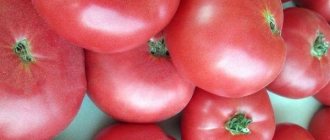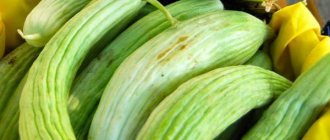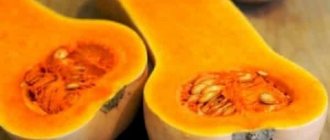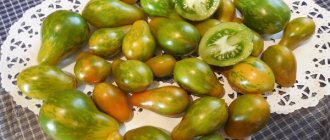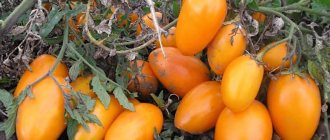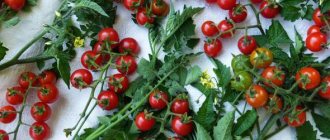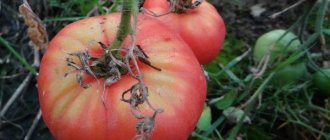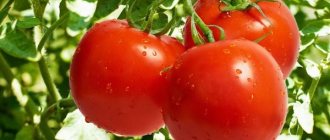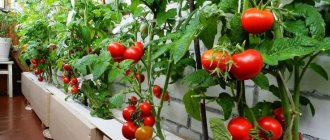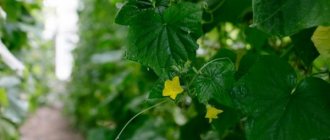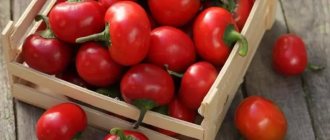Vegetable growing » Pumpkin
1
642
Article rating
Kira Stoletova
The Muscat de Provence pumpkin originated in France. It is unpretentious in care and cultivation, and with proper storage it retains its qualities until spring. The composition of nutrients in this product gives a head start to many vegetables.
Description of Muscat de Provence pumpkin
general characteristics
Butternut squash has a deep orange color inside and out and a smooth, ribbed shape. It has high productivity. The lashes grow quickly and are about 8 m in length.
The pulp of a ripe vegetable has a very dense texture, thanks to which it can be stored for a long time. The fruits are large - weigh 8-10 kg. The walls are thick, the texture is dense.
Pumpkin has a pleasant aroma and sweet taste.
The plant unravels very well on special nets or on the ground. Ripe fruits can be collected from the beginning of August until almost the first frost.
Popular varieties
Muscat pumpkin - the variety is consistent with the name of the species. Its pumpkins resemble a bell with an elongated top. The variety is late, the fruits ripen 125-135 days after the appearance of the entrances. There is no fiber in the pulp. Pumpkins are smooth orange-yellow with a vaguely defined pattern. The pulp is orange-red, tasty and aromatic. Used for processing and fresh consumption. The variety is very valuable, as it has a high content of provitamin A. Well suited for preparing baby food, juices and dietary products
Muscat de Provence is a pumpkin that has increased productivity, bred in France. Mid-season variety, fruits ripen 110-115 days after germination. It has a powerful plant that is resistant to diseases. Pumpkins have an original flat-round shape with pronounced segments. The bright orange pulp accumulates a high amount of sugars - up to 10%. The weight of the fruit, depending on the planting density, varies from 3-4 kg to 6-8 kg. Muscat de Provence pumpkin produces beautiful thick-walled pumpkins that are highly attractive when sold on the fresh produce market. They store well and are also great for making purees and juices.
Vitamin Pumpkin. The variety is distinguished by cylindrical, cube-shaped fruits. It has a late ripening period of 125-130 days, but brown-brown pumpkins with a pink tint reach a size of 6-8 kg. The almost red pulp with a high content of carotene accumulates up to 11% sugars, is very tasty and crispy. The fruits have a short shelf life, but are well suited for dietary nutrition and the preparation of children's juices and purees.
Muscat pumpkin Zhemchuzhina is an unusual variety that stands out among long-climbing mid-late varieties for its resistance to low temperatures and other unfavorable growing conditions. Cylindrical yellow-orange pumpkins reach a weight of 5-8 kg. The pulp is orange, dense, very tasty, excellent for dietary nutrition and making juices. Zhemchuzhina pumpkin is a high-yielding variety whose fruits have good transportability and a long shelf life.
Beneficial features
According to its characteristics, the most valuable thing about nutmeg pumpkin is its low calorie content and small amount of sucrose, which is why this variety is considered a dietary product. The pulp has a delicate sweet taste and a firm texture that will be similar to young almonds.
Pumpkin is universal - it is useful both in fresh (raw) and in heat-treated form.
Daily consumption will help:
- removing excess water from the body;
- disappearance of swelling caused by excess fluid;
- beneficial effects on the nervous system (when systematically used in food);
- normalization of metabolism;
- improving digestion, because is not a contraindication for various diets;
- enriching the skin with beneficial microelements;
- Pumpkin seeds (raw) cleanse the intestines of parasites.
Planting a pumpkin
Use quality seeds for planting
Pumpkin de Provence ripens in approximately 110-120 days. Seeds of this variety should be purchased from trusted sources, because... You can often find a fake or low-quality product.
The package price can vary from 36 to 400 rubles (it all depends on the quality and quantity).
Usually, in early spring, seedlings are sprouted from seeds at home in order to plant them in the ground in the first half of May.
Seeds are planted in special soil:
- soil that can be bought in stores (it can be universal or you can use a mixture for cucumbers);
- You can make the soil yourself: from small sawdust, humus peat (1:2:1), you can add nitromophos to this mixture (1 tsp per 1 kg of soil).
By the time of planting, the seedlings should reach 10-12 cm and have at least 4 formed leaves. According to technology, it is better to grow seedlings in special peat pots, and then plant the plant in the ground with them.
Growing will be better in soil where nightshades grew last year. You cannot plant after similar plants: cucumbers, zucchini, onions.
The soil must be fluffed up before planting (fertilizers must be added to it in the fall). Seedlings should be planted at the rate of 1 plant per 1 m².
How to grow
Planting and growing the Muscat de Provence variety is an exciting experience. If all the rules are followed, pumpkin patches reward you with a rich and tasty harvest. Let us next consider the ways in which summer residents plant vegetables and how they care for them.
Planting by seeds
The first method involves planting seeds directly into open ground. It is most suitable for gardeners from the southern regions of the country, where the soil is more fertile and the climate is warmer. The seed planting technology is as follows:
- Seed disinfection. Buy seeds from trusted places, pay attention to the safety of the packaging. Inspect the material for external abnormalities. Throw away spoiled seeds that have stains or scratches. Disinfect high-quality ones in a solution of hydrogen peroxide, after placing them in a fabric bag and immersing them in liquid for 5 minutes. Then remove from the bag, place on clean gauze and dry.
- Hardening of seeds. Place the material in the freezer tray and leave it there for 20 hours. Then remove the seeds and leave them at room temperature for 5 hours before placing them back in the freezer. Repeat the procedure for 5 days. Hardening strengthens the immunity of plants, protects them from external factors, and increases frost resistance.
- Land disinfection. Before sowing disinfected and hardened seeds, dig up the soil and carry out a series of disinfection procedures. Summer residents most actively use agrotechnical techniques such as crop rotation and the use of green manure. Green manures are plants that improve soil quality. They are sown during harvest. Immediately before planting, the soil is limed to reduce the acidity level, and boiling water is also poured over it to kill dangerous bacteria.
Muscat de Provence seeds are sown at a soil temperature of 10-12 degrees. Place 3 seeds in one hole, sprinkle soil on top and water generously. The distance between seedlings should be at least 1 m. The first shoots appear a week after sowing.
Planting seedlings
The seedling method is more suitable for the Urals and Siberia. After disinfection, germinate the seeds. To do this, place the material in damp gauze and keep in a warm place for one week. Germination improves the germination of the variety and accelerates growth.
For stimulation, use the preparations “Fitospirin+” or “Epin”, which also protect the future harvest from diseases and pests. Be careful, use the products in accordance with the dosages indicated on the package. An excess of stimulants will only harm young shoots.
Plant seedlings in flower pots or wooden boxes. Use ready-made soil or pre-disinfected soil from the garden. Keep the seedlings in a warm and sunny place. If there is a lack of light, arrange additional lighting with fluorescent lamps. Water the seedlings every 7 days. It is better to use filtered and settled water. After 10 days, apply liquid organic fertilizers, after another 2 weeks - mineral fertilizers, for example, urea or ammonium nitrate.
Muscat de Provence is sown mainly in early May. Pumpkin takes root best in beds after legumes or onions. For 1 sq. m it is recommended to plant no more than 1-2 bushes. To create the most favorable conditions, compost or peat is added to the beds.
Care
Muscat de Provence pumpkin is very easy to grow. The plant is undemanding to heat, light, and soil composition, but you need to remember that the pumpkin needs to be fertilized. She needs additional nutrients.
Additional feeding is positive; they are effective if the plant is planted in soil poor in nutrients. Don't forget about weeding and remove weeds on time.
Excess fertilizer can harm the plant
The pumpkin weaves quickly, you need to allocate more space for it or make special sets so that it weaves upward, but not high, because... the fruits are heavy.
- After transplanting into the ground, seedlings should be watered when the outside air temperature is above 25 °C for 3-4 days. It is necessary to pour carefully - under the bush, on the ground, without pouring water on the leaves. It is best to do this in the evening so that the sun's rays do not form a crust.
- To feed, you need to use store-bought preparations, which you simply need to dilute with water at home, according to the instructions. These mixtures already contain all the necessary elements. You can use Nitroammofoska by diluting it with water (10 g per 7 liters of water).
The main thing is not to overdo it with fertilizers so that the plant does not burn from excess nutrients.
Formation of plants
If you want to get large and sweet fruits, then you need to properly form the pumpkin bushes. One plant can have many ovaries, but it is impossible to provide food for all of them. Therefore, in order for pumpkins to grow and ripen well, leave no more than two or three pumpkins on one bush. All other ovaries are removed.
The stems are pinched (about 50 cm after the ovary), and excess shoots are removed. Also, to improve nutrition, sprinkle the stems. What need to do? Gently straighten the pumpkin vines and sprinkle them with soil in several places. The stems will give rise to roots, which will additionally feed the bush.
Harvest and storage
Provençal pumpkin is harvested in late autumn - after all the vegetables have been collected, in the second half of October.
The very first indicator of maturity is a dry and very hard tail. The pumpkin skin becomes tough and requires considerable effort when cutting.
It must be removed before frost begins, otherwise it will not be stored (it will begin to deteriorate). You need to store the fruits in a place where it is dark and cool: the temperature should not exceed 12-14 °C and be sure to maintain air humidity - about 50-70%.
The position of the fruits should be tail up and they should not touch. Damaged ones will need to be eaten first.
Diseases and pests
According to the description of the variety, Provence pumpkin is susceptible to some diseases and pests.
- Bacteriosis is small yellowish and red spots on the surface of the leaves; when they appear, the plant begins to dry out. Bacteriosis should be removed with copper sulfate diluted with water.
- White rot is the process of destruction of the plant by covering the surface of the pumpkin with a white coating. Due to a lack of moisture in the soil, this rot penetrates from the surface into the fruit, causing harm to it. You can remove rot using crushed activated carbon (sprinkle on the affected areas) or a solution of copper sulfate.
- Powdery mildew - the leaves and fruits themselves become covered with white drops, similar to dew, because of which the pumpkin begins to dry out. The reason for everything is fungal spores; they need to be gotten rid of by treating the seedlings with a 70% solution of colloidal sulfur.
- Spider mite - it wraps itself around a plant with a sticky web, clogging its pores. The plant begins to rot. To get rid of mites, you need to prepare a tincture of garlic and onion peels and spray the pumpkin once a day.
To prevent diseases, you can use drugs that are also used for growing cucumbers, watermelons, melons, and squash.
